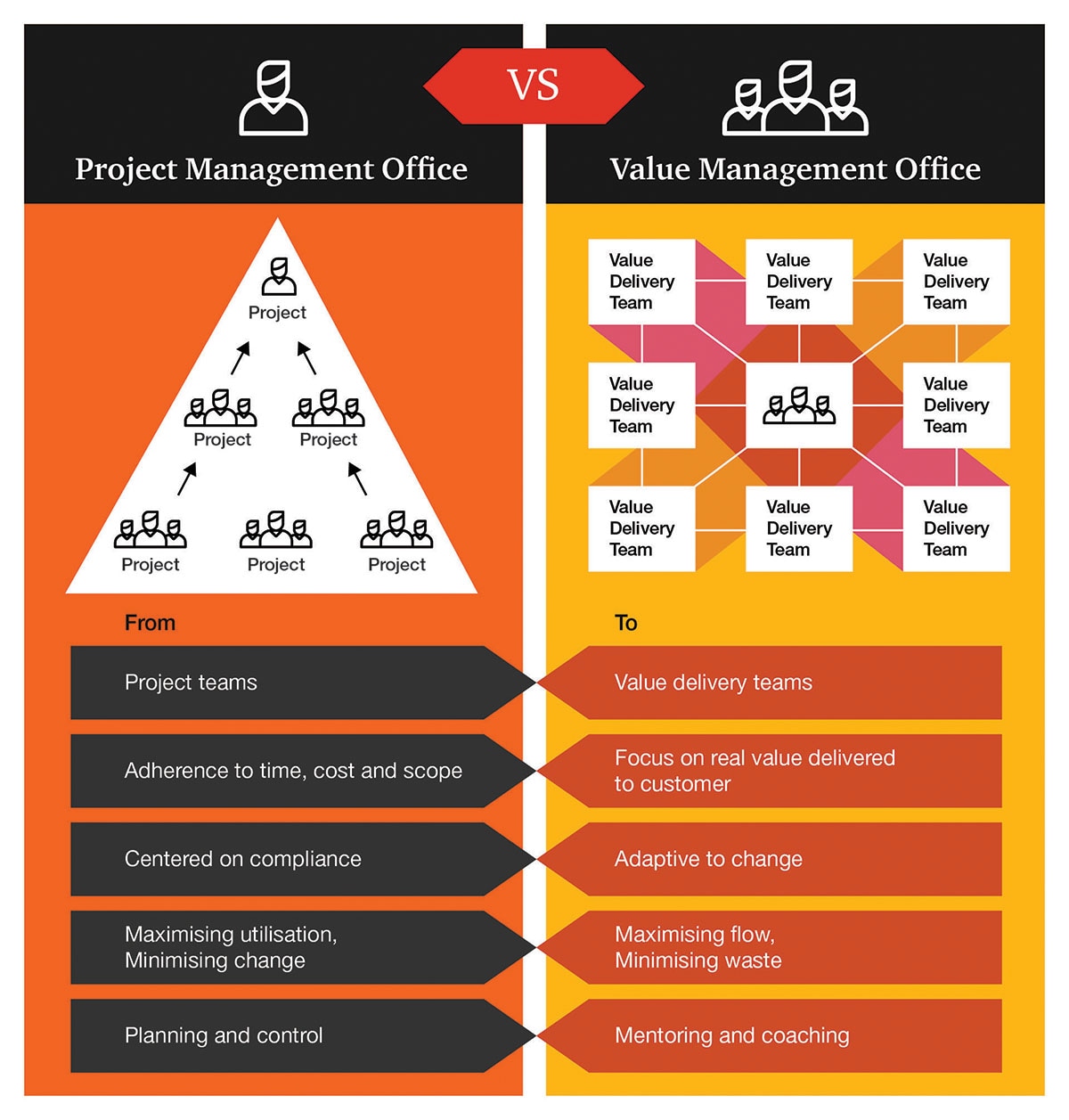The Rise of Value Management Office - Cracking the code to delivering value efficiently
24 July 2019
By Ankit Tandon, Workforce Senior Manager, PwC Malaysia
Individuals and interactions over processes and tools
One of the key reasons why some projects fail is not because of the tools or the processes. It’s often the people that are the hardest to manage. Earlier, we discussed enterprise agility and how to turn common challenges around people and culture, the work itself and outcomes, into opportunities.
Now, let’s explore the values in the Agile manifesto in relation to how projects can be managed. The first Agile value in the Agile manifesto is to focus on people and their interactions over following rigid processes and tools. Processes are important, but they should act as enablers for people to interact, work together, innovate and solve problems.
Traditional ways are good for managing Waterfall projects* but might slow Agile teams down
When the environment is volatile and the rate of change is high, traditional metrics, tools and governance processes need to be reestablished to manage what is needed and measure what really matters. Having the right governance and metrics is one of the key enablers for Enterprise Agility.
Value Management Office (VMO) is the way forward for Agile teams
Establishing a Value Management Office is a step away from being a highly process driven function to a more nimble and outcome focused cohort that enables agility by leveraging smaller, lighter weight controls. It is focused more on individuals and their interactions to generate value delivered to customers in the quickest possible time.
*Refers to the Project Management Office (PMO) approach. More details in the table below.

Here is a brief comparison between the two:
Traditional PMO |
Agile VMO |
|
|---|---|---|
Ways of working – Sequential/Waterfall |
Ways of working – Iterative and incremental/Agile |
|
| Teams | Based on projects, which are temporary in nature. Once the work is finished, the team disbands and joins another project. |
Teams are focused on a continuous delivery of value from concept to cash. |
Governance |
Revolves around staged gateways, rigid approval processes, centralised decision making and authority, and detailed project plans |
The focus shifts to value delivered, lean financial governance, alignment with strategic goals, inter-team dependencies, ‘batch size of the work’, as well as reducing waste and organisational impediments. |
Processes |
Centered on compliance and predictability. Involves tight change management and control over amendments to the plan. |
The focus is on anticipating and accommodating changes as business needs emerge during the execution phase. Flexibility is given to teams to collaborate and pivot as needed. |
Metrics |
The focus is on control through milestones, document-driven deliverables, Gantt charts and maximising utilisation. |
Primarily focuses on maintaining flow with metrics like WIP, Batch size, Lead time and Cycle time, Burndown charts, Business value delivered etc. Success is not measured on the basis of sticking to a plan but the real value delivered to customers. |
Role |
Involves planning and control. Acts as an intermediary between the business and teams with a focus on tracking and reporting. |
Centres around mentoring and coaching for Product Owners, Scrum Masters, the leadership team as well as stakeholders on how to enable and support delivery teams in maximising the value delivered. |
Agile teams moving swiftly need nimble ways of governance and management to quickly check progress and respond. They need to have the right metrics to focus on real value delivered to their customers. A Value Management Office is effective in monitoring the progress of Agile teams and enabling them to deliver value to customers using Agile metrics.
Everything evolves and so has the PMO approach to complement the Agile ways of working. For Agile teams and organisations, Value Management Office is the way forward.
Got questions?
When do you use a PMO vs a VMO? How do you set up the KPIs/metrics that matter? What are the key systemic blockers that impede the flow of value in an enterprise and how do you alleviate them? How can you enable Enterprise Business Agility? Come and have a chat with us.
About Agile@PwC SEAC Impact Centre
Agile@PwC SEAC Impact Centre is part of PwC South East Asia Consulting (SEAC) based in Malaysia. It is built as a ‘Community of Practice’ across each territory* and is in partnership with PwC’s global network of firms. Our team consists of experienced Enterprise Agile coaches and change agents who help organisations in their Agile journey.
*Territories we partner with include Indonesia, Philippines, Singapore, Thailand and Vietnam














